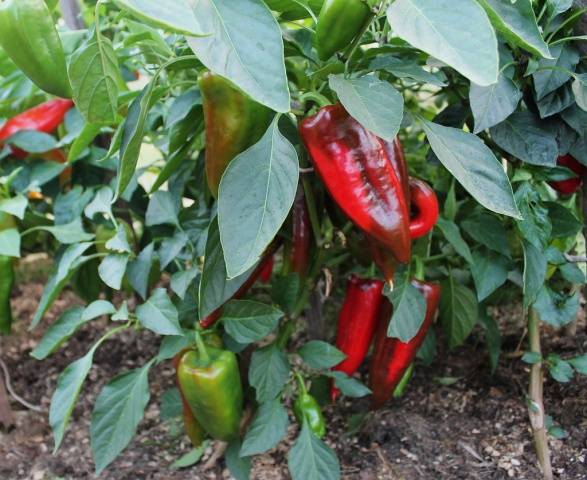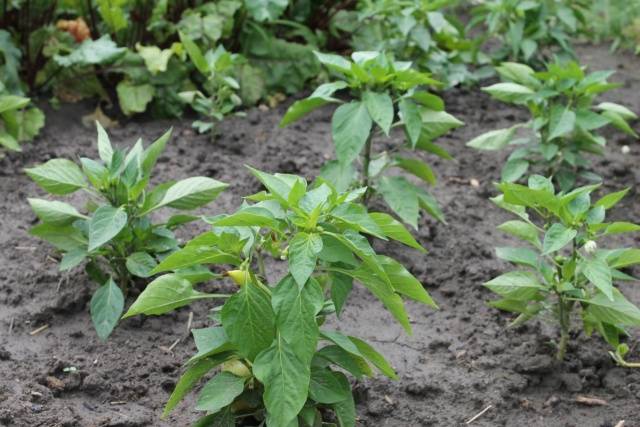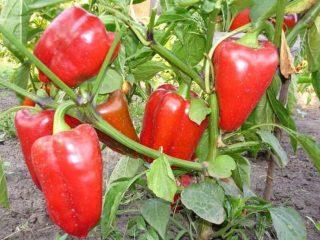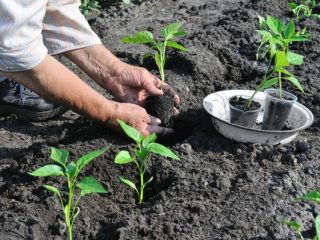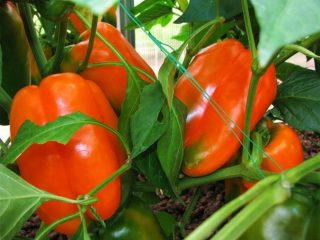Content
Sweet pepper Gift of Moldova is a vivid example of how long a plant variety can be popular if its quality meets the demand in many respects. The variety began to spread in 1973, and to this day many gardeners prefer to grow the Gift of Moldova. The unpretentiousness of the plant, the ideal shape of the fruit, and good yield made the pepper variety a favorite in summer cottages and backyards.
Plant characteristic
The variety was bred at the Moldavian Research Institute, and in more than forty years it spread to Siberia and the Far East. According to vegetable growers, the Gift of Moldova pepper is not inferior to many modern hybrids. From 1 sq. m, with timely and regular care, they receive 5-8 kilograms of juicy fruits. Photos of luxurious pepper bushes Gift of Moldova are confirmed by reviews about the yield of the variety.
The plant is grown outdoors and in greenhouses. The bushes are resistant to temperature changes and fluctuations in humidity. One has only to pay more attention to the plants during flowering so that ovaries form. Fans of vitamin products of their own cultivation plant the variety even on balconies in cut-off 5-liter cylinders, and get fresh fruits as an exquisite delicacy. Bell peppers actually activate the release of endorphins, just like chocolate. It just needs to be included in the diet of the modern busy person.
The characteristic of the variety is determined by its ripening period. Pepper Gift of Moldova gives mid-early fruits, and their description from the beginning of the spread of the variety has determined consumer demand for the form of these once exotic vegetables. The structure of the pepper berry Gift of Moldova is very convenient for stuffing. The average ripeness makes it possible to pluck the fruits even in the phase of technical maturity in the middle of summer. Biological maturity occurs two weeks later, 125-135 days after planting the plants in a permanent place. Fruits of this variety are well stored in cool rooms and tolerate long-distance transportation.
Description of the variety
Half-stemmed pepper bushes Gift of Moldova are compact, low, grow up to 0.35-0.5 m, not spreading, up to 30-38 cm in diameter. The root system is well developed, the stem is of medium power, elastic, capable of bearing a large load of fruits. The internodes are short and many ovaries are formed. A bush of medium foliage. The leaves are small, bright green.
Hanging pods. Large, even cone-shaped fruits 7-10 cm long, diameter near the stalk 4-5 cm.Weight from 50 to 100 g, the average weight of the fruit is 70-80 g. In technical maturity, the fruits are light green, ripening, become bright -red. The skin is thin, dense. The pulp is juicy with a thickness of 5-6 mm. Excellent taste of the fruit is a guarantee of the popularity of pepper. The pods are crispy, sweet, with a characteristic peppery flavor. Suitable for fresh salads and various preparations.
Advantages and disadvantages
Judging by the durability in the gardens, the Gift of Moldova pepper is distinguished by its high merits, as evidenced by the reviews and photos of the fruits of those vegetable growers who constantly grow it.
- Beautiful, comfortable and even fruit shape;
- Mid-season;
- Stability of fruiting;
- Productivity;
- Unpretentiousness and endurance of the plant;
- Fusarium wilt resistance;
- Good keeping quality, transportability;
- High commercial quality.
The disadvantages include the fact that the fruits of the Podarok Moldova variety are rather thin-walled compared to current hybrids. This variety of pepper, like any other, belongs to plants that come from warm regions that require the close attention of a gardener.
Growing seedlings
Pepper Gift of Moldova must be grown through sowing seeds for seedlings. Before determining the date of planting, gardeners calculate when and where the plants will be planted. The February sowing is intended for greenhouses, and seeds for seedlings for planting peppers in the garden are sown in March. Seedlings take a month and a half to get stronger and start the growing season in a permanent place. If sprouts have already sprung up in early March, the first fruits can be picked by the end of June.
Preparing soil and seedling containers
When starting to sow, take into account one more fact. Seedling of the Podarok Moldova variety rises quickly and grows to the sides. Therefore, individual pots do not need to be placed close to each other so that the plants can develop freely. It is best to place the pepper seeds one at a time in the seedling trays.
- The soil is purchased in the store or prepared independently. It should be nutritious and loose;
- Sand, humus or peat are added to clayey soils;
- If the soil is sandy, add more humus.
Sowing
Pepper varieties Podarok Moldova are often grown with seeds harvested with their own hands.
- Before sowing, they are disinfected for 20-30 minutes in a pink solution of potassium permanganate;
- To speed up the germination of seeds, they are soaked in clean water for 10-12 hours;
- Wet seeds are dried and sown immediately, embedded in the ground to a depth of 1.5-2 cm.
Seedling care
Fortified sprouts should be kept in a room with an air temperature of 23-25 degrees.
- If the seeds have been sown in a large container, they are transplanted into separate cups when 2-3 true leaves are created;
- Plants are watered sparingly, without waterlogging, to avoid the disease of blackleg seedlings;
- February crops must be supplemented: the plant needs at least 14 hours of bright light;
- The first feeding is carried out when real leaves appear. Dissolve 0.5 g of ammonium nitrate, 1 g of potassium sulfate, 3 g of superphosphate in 1 liter of water and water the plants - 100 ml each;
- Two weeks later, fertilizing with the same fertilizers is given, but the dose is doubled.
When the pepper bush has formed 8-9 leaves, the seedlings begin to harden, taking them out into the shade, and then briefly placing them in sunlight.
Plants in the garden
The pepper bush, which has grown to 18-20 cm, needs to be transplanted to a permanent place. They do this in May or June, focusing on the weather conditions of the region. Pepper can only grow at freezing temperatures. The slightest frost will destroy the plants.
- When planning the planting of pepper, gardeners have been preparing the site since the fall. For 1 sq. m, 5 kg of humus or compost are introduced, fertilizers are scattered: 2 tablespoons of superphosphate, 3 tablespoons of wood ash;
- In the spring, loosening the soil, they also scatter fertilizers: one and a half tablespoons of phosphate and potassium, one tablespoon of nitrogen;
- In cold climates, peppers are planted on high ridges.
Pepper varieties Podarok Moldova are planted according to the scheme 50 x 40-30 cm. The seedlings are buried in the soil to the level of the cotyledon leaves.
Watering
The pepper variety "Gift of Moldova" is hygrophilous, so it works well in greenhouses. It needs to be watered regularly. It is especially important to ensure that the soil does not dry out at the time when the buds appear, and then flowering begins.The further period - the formation of ovaries and fruits - is also distinguished by the increased plant requirements for a sufficient amount of moisture in the soil. After watering in the evening in the morning, the soil is loosened to a shallow depth; in extreme heat, it can be mulched with grass or straw. In large areas, pepper seedlings are planted on black foil or spunbond. Then there is no problem with weeds.
Top dressing
Pepper plants need regular feeding, including the Gift of Moldova variety. Pepper, according to the descriptions and reviews of gardeners, gives an excellent harvest after three dressings. Each grower chooses what is more suitable: special complex fertilizers for pepper or organic matter. Fresh manure is diluted with water in a ratio of 1:10. Before fertilizing, the plants are watered.
The first time the plants are fertilized 15 days after planting;
The second feeding is during budding;
The third time fertilization is carried out when the ovaries are formed.
Care features
Leaves should not be removed from plants, they are needed for development.
- A pepper forms many fruits if the first flower is removed from it;
- It is also necessary to pick the first pods in time. Having collected them green, the plant is given the opportunity to build up a mass of other fruits.
Pepper is resistant to disease. Regular care rewards a high yield of tasty and healthy fruits.
